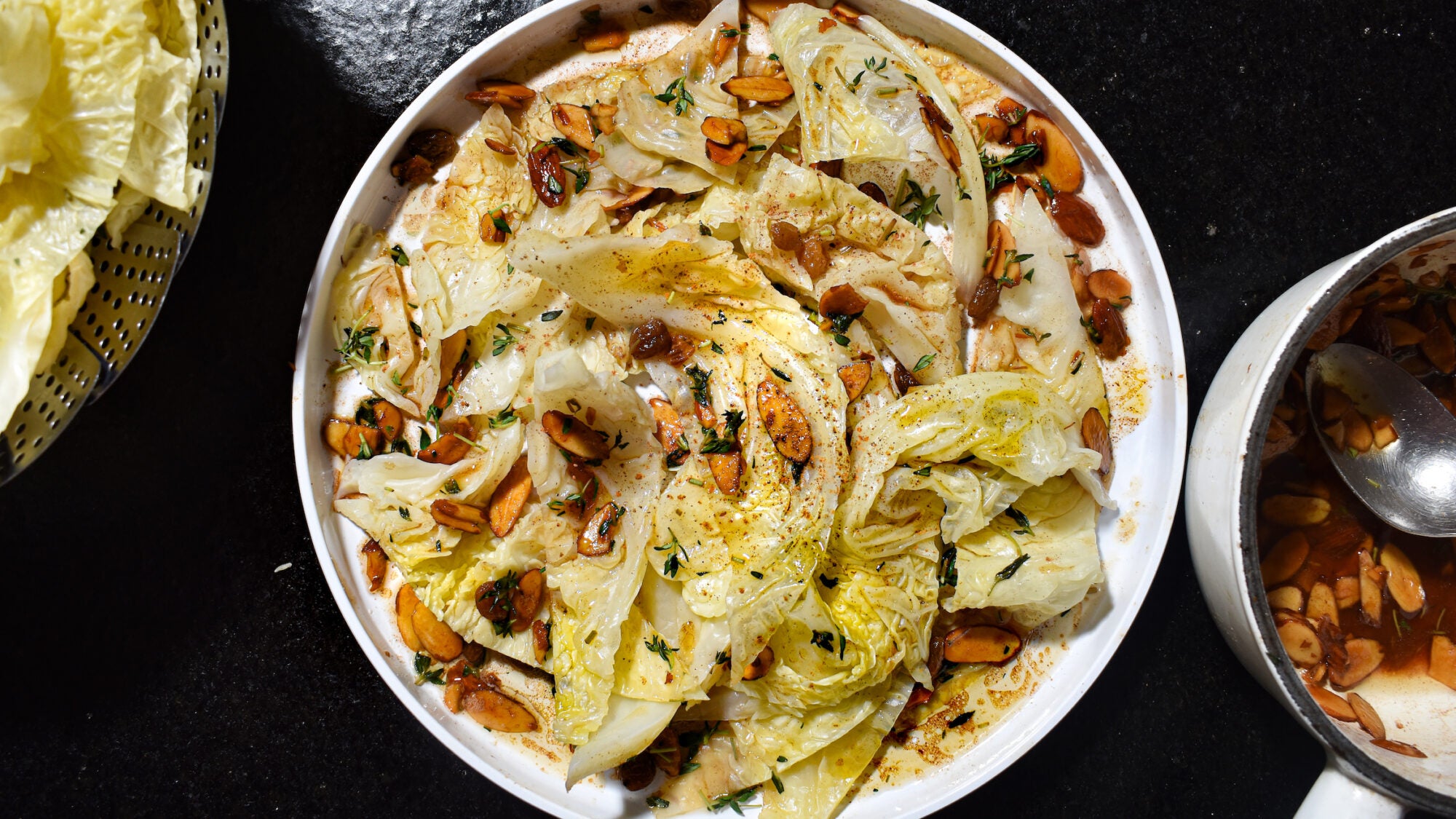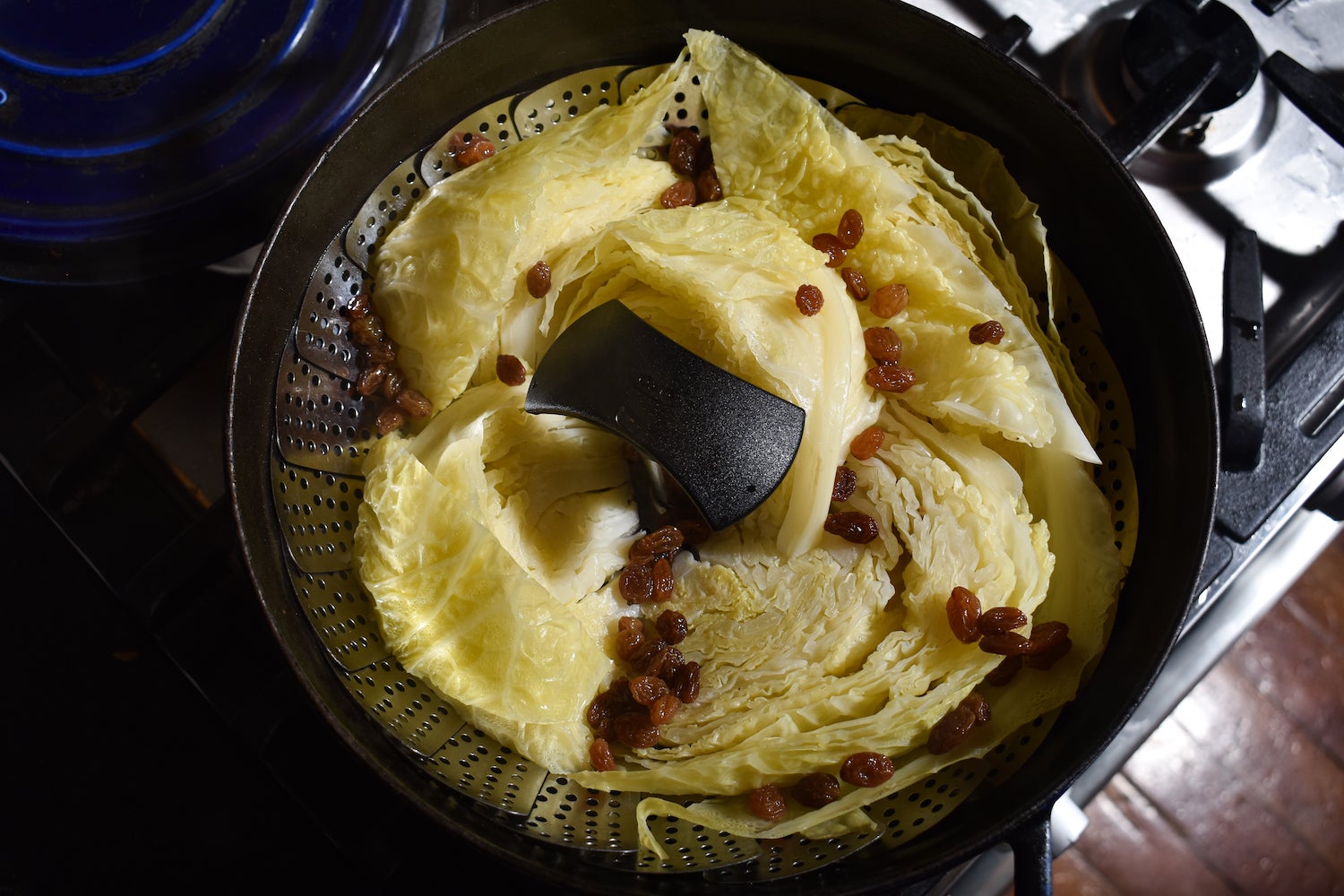
For the sweetest, greenest cabbage, break out the steamer.
Cabbage is a gentle veggie at heart. Its petals are tight, curious, and crunchy, and its flavor is mild but sweet. Yet most recipes take an aggressive approach to coaxing the leafy vegetable out of its deep winter slumber, opting for burning, charring, and searing to reach a state of caramelization. But the more delicate approach of steaming cabbage (be it napa, savoy, or classic green) has a lot of advantages that are often overshadowed by those other cooking techniques.
First, steaming requires no fat in the cooking process, and this pays off in spades. Since steaming is a gradual way of cooking, it yields a more cabbage-y flavor without being overpowered by char. Steaming cabbage preserves its color, texture, and nutrients, and presents a natural flavor akin to a confit or a slow barbecue. The flavor of the cabbage, when steamed, is sweet—creating a perfect backdrop for flavors like nutty brown butter, fried almonds, and sherry vinegar.
Steaming is a really easy technique to master that I learned while working in restaurant kitchens. It’s a simple process wherein a vegetable sits above simmering water and is cooked by hot water vapor. At home, I use a perforated, adjustable metal steamer basket that can sit in almost any of my pots and Dutch oven.

The cooking time depends on the density of what you’re steaming and how much you pack the basket, but leafy vegetables like cabbage can cook through in minutes if it’s only a few leaves. A steamer basket like the one I have set me back about $8, but there are many options available, like pots with built-in baskets, stackable bamboo ones, or clay pots like a Japanese donabe. You could even use a metal colander if you don’t have a steamer basket.
Sure, you can achieve a similar effect with blanching, but it requires more water and more time, and it leaves you with cabbage whose delicate flavor has leached into the salted simmering water. Steaming has the added benefit of keeping individual leaves or wedges of cabbage elegantly intact and ready for the serving plate.
Because cabbage is still a relatively mild vegetable, I like to add a robust sauce that can sink into the nooks and crannies of the petals. This starts with frying some sliced almonds in a hunk of butter. The almonds start to sizzle in the butter as it cooks, creating an extra-nutty brown butter. Sherry and red wine vinegar, some plumped raisins (that I steam right alongside the cabbage), honey, and herbs like thyme make this a wintry salad that’s warm and sensually inviting. Try it with a pan-roasted pork chop or a crispy-skinned duck leg confit.